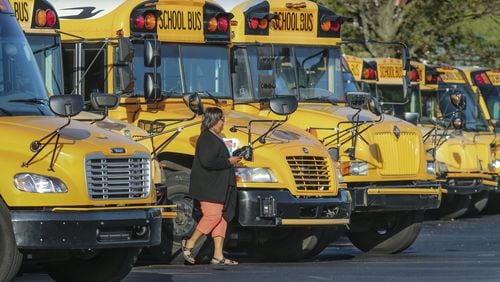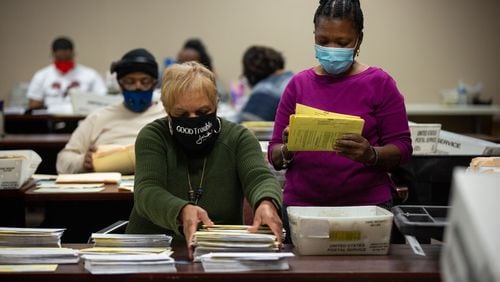Five years ago, DeKalb County School District officials approved a $760 million operating budget to continue recovery efforts for a system decimated by The Great Recession and mismanagement that left $14 million in debt.
Efforts to decentralize operations and give schools more localized support have translated to $320 million more to be spent for the 2018-2019 school year and dozens more administrative staffers, while student enrollment and standardized test scores are basically flat.
School district budgets across the country are increasing at a ferocious pace as the U.S. continues to improve from the recession. For struggling districts such as DeKalb, eyes are focused on how the money is being used, and whether it’s helping with student achievement.
“The budget has gone up $50 to $100 million every year,” said DeKalb County Board of Education member Stan Jester. “What do we have to show for all the money we have spent?”
Superintendent Steve Green’s reorganization which began in early 2016 included additional administrative positions to start decentralizing administrative offices, Green said. That meant giving each regional superintendent his or her own cabinet, consisting of several secretaries and representatives from finance, human capital management, transportation, facilities and curriculum and instruction, among other departments. Two new regions were approved, bringing the number of regional superintendents to seven, during the current school year.
"Our Board has made clear its desire that we hire and retain staff members, in a fiscally responsible manner, with the skills to help our students become college and career ready," Green said Friday through district officials. "We are proposing staffing levels … that support the needs of our students — such as 70 percent enrollment in the free- and reduced-lunch program, speaking more than 10 primary languages, and a host of instructional concerns. This is especially true when reviewing increases in staffing costs for employees not assigned – fiscally – to a schoolhouse."
The proposed budget also includes $53 million more in salary and benefits for the district’s 15,617 staffers, with about half of that going for the 4,353 staffers who don’t work in schoolhouses. The district has added several administrative positions, including 20 roles in two new regional superintendent cabinets, as well as directors for grants, network security and the Early Learning Center. Michael Bell, the district’s chief financial officer, said Friday that a mandated $23.4 million retirement contribution as well as $2 million in insurance for non-schoolhouse employees had significant impact.
Many of the new administrative positions, Green said, are being added to support students and schools, particularly those with struggling performance. This, he said, included a new division of accountability "to better understand student performance," adding 10 school resource officers (police) "to keep students and staff safe," and 13 interpreters "to ensure all students receive quality instruction."
"In the end, this isn't simply a matter of counting sides of the workforce or who fills what seats," Green said. "Doing so ignores the question of how we meet the very real needs of students."
DeKalb’s budget peaked at $886 million for the 2008-2009 school year before dramatic losses in tax collections and state contributions sent the annual budget as low as $730 million for the 2012-2013 school year. During budget talks for the 2015-2016 school year, exiting Superintendent Michael Thurmond announced the district had a fund balance of nearly $100 million on the books as it worked to approve an $855 million budget.
Julian Betts, an economics professor at the University of California at San Diego, said school districts across the country have seen significant increases over the past few years as they continue to recover from the Great Recession.
“We saw a lot (of school districts) see declines during the Great Recession,” he said. “The very big increases … are just making districts whole.”
The DeKalb district also dipped into its general fund balance, sitting at $127 million at the end of the 2016-2017 school year, to cover costs above tax revenues. The district says the fund balance should be about $101 million at the beginning of the new year, which begins July 1.
Worries are compounded by recent news that the district could be on the hook for up to $240 million to be repaid to employees after the district abruptly ended contributions to a supplemental retirement fund in 2009.
The current proposed millage rate of 23.28 mills would raise taxes by 9.51 percent. The proposed tax increase for a home with a fair market value of $250,000 is approximately $176.84, district officials said. The proposed tax increase for nonhomestead property with a fair market value of $400,000 is approximately $323.36. Jester said the millage rate is among the highest in the state.







